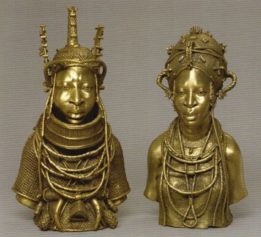DJENNE-DJENNO, one of the best-known archaeological sites in sub-Saharan Africa, spreads over several acres of rutted fields near the present city of Djenne in central Mali. The ruts are partly caused by erosion, but they’re also scars from decades of digging, by archaeologists in search of history and looters looking for art to sell.
When I was there last fall, a few archaeology students were in evidence. These days, with Mali in the throes of political chaos, it’s unlikely that anyone is doing much work at all at the site, though history and art are visible everywhere. Ancient pottery shards litter the ground. Here and there the mouths of large clay urns, of a kind once used for food storage or human burial, emerge from the earth’s surface, the vessels themselves still submerged.
The image of an abandoned battlefield comes to mind, but that’s only half-accurate. Physical assaults on Djenne-Djenno may be, at least temporarily, in abeyance. But ethical battles surrounding the ownership of, and right to control and dispose of, art from the past rage on in Africa, as in other parts of the world.
A few weeks ago the Museum of Fine Arts, Boston, announced the acquisition of an American private collection of 32 exquisite bronze and ivory sculptures produced in what is now Nigeria between the 13th and 16th centuries. Within days the Nigerian National Commission for Museums and Monuments claimed, via an Internet statement, that the objects had been pillaged by the British military in the late 19th century and should be given back.
More chilling were reports last month of cultural property being destroyed in Timbuktu, Mali, some 200 miles north of Djenne. Islamist groups, affiliated with Al Qaeda, have singled out Sufism, a moderate, mystical form of Islam widespread in Mali, for attack. In Timbuktu, with its Koranic schools and manuscript libraries, they have begun leveling the tombs of Sufi saints, objects of popular devotion.
In short, the wars over art as cultural property take many forms: material, political and ideological.
Read more: Holland Cotter, NY Times


